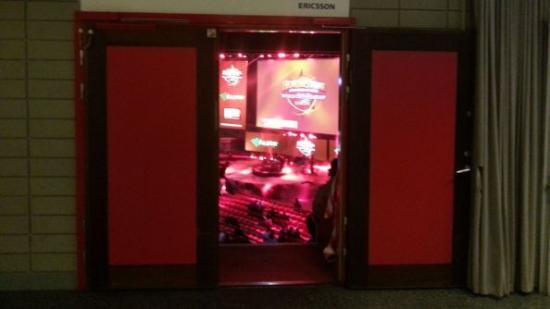Hearthstone’s early Twitch explosion has left its creators scrambling to build the scaffolding to support it, while eSports names old and new rush to fill the vacuum around its top players.
Some of those players have the backing of established organisations; others are entirely alone. But none of them know whether they have a full-time job in Hearthstone ahead of them – and they’re all faced with the difficulty of deciding who to trust in a still-growing ecosystem.

At the European Hearthstone Finals in Stockholm, two players sit almost nose-to-nose at a makeshift pub table. The only drinks served in this establishment are bottles of still water – but that hardly matters to Ukrainian pro Neirea, who doesn’t touch his.
His opponent, dressed in open white shirt and tan leather jacket, is Max. Max is an unknown. This is the first time he’s sat before the official Hearthstone Twitch channel’s cameras. He buckles under Neirea’s initial assaults, but soon stabilises – winning one match, and then surviving an exhausting, half-an-hour second long enough to silence one of his own minions: an unwanted acolyte foisted onto his side of the board. The move draws exasperation from the Ukranian, and gasps of applause from the stands.
An online audience of at least 50,000 watch his win – the self-assured victory of a pro. But in the strictest sense of the word, Max is a long way off declaring himself professional. Semi-professional? “I wouldn’t even go that far, to be honest,” he tells me afterwards.
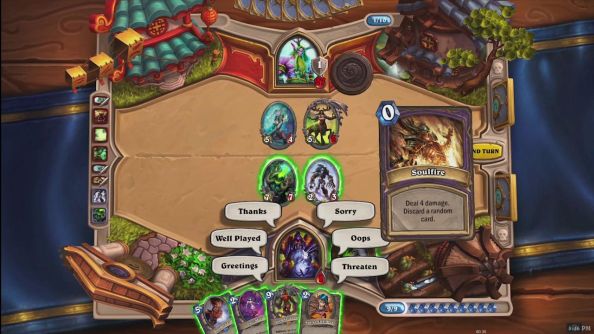
Max has played Hearthstone for five months, and played competitively for two. He’s yet to make any money from the CCG – the perks of his ability began just hours earlier with the flight to Sweden – and lacks the backing of a team or manager.
It’s a kind of independence that comes with unexpected costs: namely a scant four hours’ experience with the patch that landed a day before the tournament, and the “misfortune” of leaving an adapter at home – making practice at the hotel impossible.
“All my practice is done on the ladders. I don’t have any practice partners,” said Max. “I guess it makes it a bit more stressful having a few extra things to worry about.
“I don’t know how much it affects tournament performance though. It would be absolutely great not to have to worry about that sort of stuff, but so far I’ve managed.”
The contrast with the European Hearthstone Finals’ other UK representative couldn’t be sharper. Greensheep got to know Hearthstone in last year’s beta, and was brought into contact with eSports’ old guard through the other top players on his friends list.
Now decked out in the familiar black-and-yellow colours of Team Dignitas, the Blackpool teen accredits much of his success to his teammates.
“I think a team is a really big deal – they’re usually the same skill level as you, and they’re always online,” he enthused. “If it wasn’t for [Dignitas fellow] Blackout, I don’t think I would’ve won that last game. He gave me the Paladin that snatched it.”
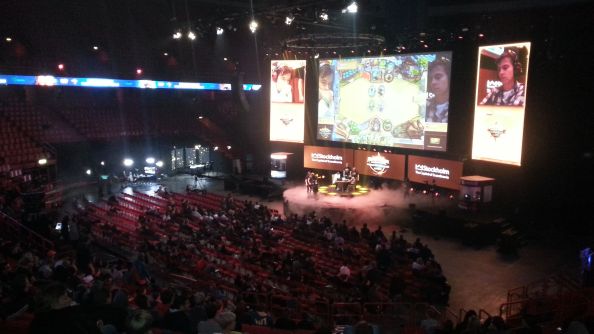
It’s telling that Dignitas have mimicked the structure of their squads in other, team-based sports like Counter-Strike and LoL. Hearthstone might be played solo – but pros in any game need a sounding board, and they need the company.
“If I wanted to do this full-time, go to every single tournament, I think I would need a support structure,” said Max.
“My dad’s trying really hard to understand and get involved. Two of my housemates play Hearthstone, but they’re not top-tier legend players. I can talk Hearthstone with them, but they don’t really understand on the same level as some of the pro players here.”
There’s a thread of uncertainty that trails through conversation with Hearthstone’s best players: neither Max nor Greensheep are confident that the game can become their full-time employment, even as they draw in thousands of viewers on Twitch.
Max has two more years of a physics degree he’d like to finish, and is wary of “giving up [his] life to chase becoming a professional Hearthstone player”.
Greensheep’s association with Dignitas extends til the end of the year, on a “see how we go” basis. He harbours a back-up ambition as an eSports organiser (“I might as well work in this sector because I know a lot about it already”).
“I’m still a student, and I can’t make a living off this at the moment,” said Greensheep. “I’m hopefully going to start streaming soon, but I need a better computer. Hopefully people will watch me and I can make a bit of money. But it’s not enough to sustain.”
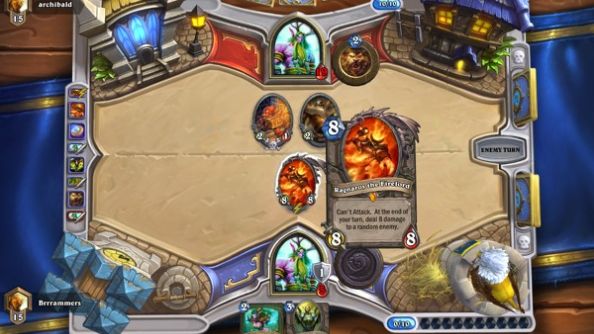
It’s not yet clear where financial stability for Hearthstone’s pros will come from: team salaries, perhaps. Sponsorships. Or a league directly funded by Blizzard where “everyone gets a bit of money” – an idea floated enthusiastically by Greensheep, but prodded with caution by celebrity caster Artosis.
“You can get very steady and solid pro gamers [that way], but I personally like the more open approach,” he said, in the aftermath of a weekend’s sleepless broadcasting.
“League of Legends does fantastically, yes, these guys are making livings and whatnot,” he went on. “[But] this is one company controlling everything. And when it’s one company controlling everything you don’t have the competition.”
Artosis pointed to StarCraft, where competition between organisations like ESL, DreamHack and others has gradually improved standards and payouts.
“Pro gamers have more freedom, they can do whatever they like. If they want to play a lot or not play a lot it’s up to them,” he explained. “While it may be more steady and solid for a while the other way, I feel this way is a more natural and long-term better. Because eventually [Blizzard] could be like, ‘Okay, we’re not doing this anymore’.”
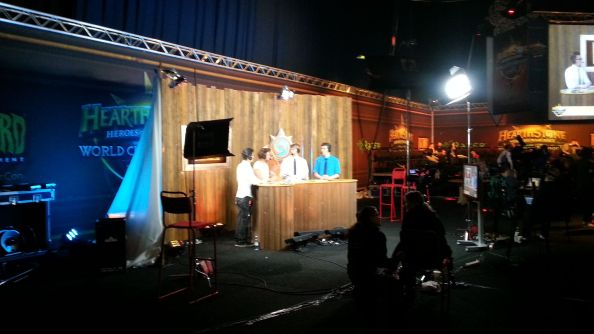
For better or worse, Blizzard themselves aren’t any keener to extend their control or responsibility beyond the level they’ve already established in StarCraft.
“Honestly, I don’t think you have to be on a pro team to be a professional Hearthstone player, and that’s what I love about it,” said senor eSports manager Kim Phan.
“There are so many players that play Hearthstone, so to try and create a job for anybody who plays Hearthstone isn’t really an approach that we take. If people are able to make a career out of it, I think that’s amazing, but obviously it requires time and dedication.”
Phan worries that a developer-controlled infrastructure “might restrict” what has turned out to be an unusually accessible eSport.
“That’s my initial thought,” she said. “That type of system only seems to really support a set number of players. And that may be a good system, but with Hearthstone we love that there are lots of different events and different ways for people to compete.”
There’s strong precedent for sitting back and letting the ecosystem grow around an eSport’s players – but there’s reason for real concern, too. You don’t have to delve too deeply into the scenes of StarCraft and League of Legends to hear the horror stories – of young teams financially exploited by unscrupulous managers.
It’s for this reason, Phan says, that Blizzard have been proactive in building relationships with Hearthstone tournament organisers and team managers – and in ensuring players and the community “feel like they can reach out to us when these types of things happen.”
“So we’re really quick to hear of situations, and we address them – maybe not publicly, but we do,” said Phan. “You see how the internet is, everything gets brought up very quickly. Even if it’s not done that way, we have avenues where people are able to reach out to us.
“It’s a case-by-base thing I would say, and it’s something we are aware of. I think we just handle them as we get ‘em.”
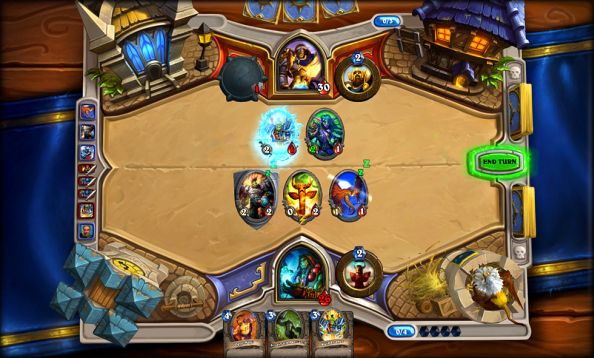
Greensheep is grateful to have been picked up by a known team – but remains optimistic about emerging Hearthstone organisations.
“I was on a different team called Innovatio before I was on Dignitas,” he explained. “It was a small French company, not really well known. They were really nice people and really tried to help us get to places.
“There are people out there that just want to help. They love the community and just love working with people.”
There is a sense that the worst of Hearthstone’s teething issues are already behind it. Certainly, it’s hard to imagine a more catastrophic alignment of problems as during the DreamHack Summer finals, when a supporter of Romanian pro Rdu took it upon themselves to reveal the hand of his opponent via text chat.
Since then, Hearthstone pros have played using accounts with chat disabled – and Blizzard’s idea of what tournament-level play should look like has solidified, even before the addition of a much-requested spectator mode (“the team is just trying to catch up on all the features they want to release”, says Phan).
“There were issues when people would cheat in every single eSport at the beginning in some way,” said Artosis. “This is just the growing pains of the game and I don’t think it’s a big deal. It sucked, but I think that part is mostly over. We’ll have a few little bumps.”
Artosis isn’t the only old hand to remember similar shakiness in the first years of better-established games. DreamHack press officer Fredrik Nyström recalls some “interesting” quirks in StarCraft’s early development as an eSport – “but now we have learned how to do it in a really good way.”
“Hearthstone is still a super young game, so every match and every tournament we do is a learning process,” he said. “I mean, that’s part of the fun. Evolving with the game – together with publisher and players, inventing how we should progress as we do it. We don’t have the blueprints.”

Ask around at DreamHack Stockholm, and you can start to piece together a shared image of Hearthstone’s future.
Greensheep believes the game will be the “biggest in eSports”.
“I think it might even top League,” he said. “You never know. At least at the rate it’s growing, it’s amazing. I just hope Blizzard keep funding it like this, keep doing these events and more frequently.”
Artosis, now in his second decade circling eSports, hopes that Blizzard will let Hearthstone “find its own way”.
“I like the more open approach. I don’t know what to call it – the more capitalistic approach,” he said. “Let the space figure itself out, because then I’m not locked down in the way anyone in League of Legends is. I think that’s the healthiest way to go personally.”
Nobody yet knows exactly what a Hearthstone pro will look like. But Max has allowed himself to imagine them: older, and more comfortable.
“Some eSports players retire early – I know that’s a thing with Starcraft because eventually you start slowing down,” he said. “But I don’t think that would be such an issue with Hearthstone.
“I study maths and physics, and they say you peak at age 26 – that’s when you’re at your prime mental ability. I don’t know what the peak is with Hearthstone, but there’s plenty of 40-plus Magic players still playing the game at a competitive level. I don’t see why Hearthstone will be any different.”
